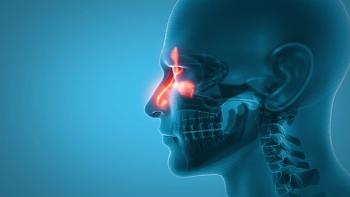As syphilis cases continue to rise in the US, researchers have identified a cluster case in the Chicago area, with recent surges of primary and congenital syphilis are due in part to a lack of testing. The cases in Chicago are associated with rare neurological symptoms experienced in the eyes, ears, or brain.
What’s the Issue
Key Takeaways
- Researchers presented their findings on neurologic, ocular, and otic (NOO) syphilis cases in the Chicago area at the 2024 Epidemic Intelligence Service Conference in Atlanta.
- They found 28 cases of NOO syphilis with accompanied symptoms of brain swelling, headaches, strokes, and mental changes.
- The Chicago-area cluster of NOO syphilis has urged researchers to continue pushing testing programs, as congenital syphilis cases are also rising in the US.
In 2022, the CDC reported a 60-year high of over 207,000 syphilis cases in the US.1 Paying close attention to the recent rise in cases, researchers have since found a cluster of cases in the Chicago metropolitan area. Patients reporting syphilis in this area, however, are exhibiting rare symptoms of dizziness, headaches, and photosensitivity, among other symptoms, suggesting that this type of syphilis is infecting the brain.
- In a report presented by Amy Nham, PharmD, MPH, BCPS, and health scientist with the CDC, at the 2024 Epidemic Intelligence Service Conference in Atlanta, she and 2 colleagues found 28 neurologic, ocular, and otic (NOO) syphilis cases in Chicago from January to August 2023.2,3 Of those 28 cases, 20 showed neurosyphilis symptoms, 17 showed ocular syphilis symptoms, 1 showed otic syphilis symptoms, and 10 showed 1 or more NOO syphilis symptoms.3
- The reason NOO syphilis cases are so alarming is because the symptoms that accompany them are typically found in the third stage of syphilis, which is usually detected at least 10 years after initial infection.1
- Common NOO syphilis symptoms include brain swelling, headaches, strokes, and mental changes. In the ears and eyes, symptoms include light sensitivity, swollen eyes, and vision impairment, as well as hearing loss and tinnitus—an ear infection commonly reported with symptoms of ear ringing.1,4
Why It Matters
- Statistics regarding HIV-positive patients and their sexual preferences are key to the NOO syphilis cluster in the Chicago area. Nham reported that she was surprised to discover that less than one third of the cases were reported in patients who were HIV-positive, since these individuals are more susceptible to severe symptoms of NOO syphilis. Nham said she expected more of these patients to be HIV-positive, creating more of a staggered association between men and NOO syphilis cases. “Men who have sex with men have traditionally had the highest burden of syphilis in the US, and that’s still true; but in recent years, the demographics of the infection have been shifting, and infections have more than doubled in heterosexual men and women since 2019,” wrote Brenda Goodman for CNN.1
- In Nham’s report, researchers identified 28 instances of NOO syphilis in the Chicago area. Of those 28 cases, 75% were in men and 71% were in non-Hispanic Black individuals and median patient age was 50 years (range, 23 to 82 years). Within this group of cases, 32% were in individuals who were also HIV-positive; 21% identified as homosexual men, with 54% identifying as heterosexual and 25% with undocumented sexual preferences.3
Expert Commentary
- “Providers definitely need to be screening more and be aware that this is what we’re seeing. They’re not the most specific symptoms, which is why it’s really important that providers are doing appropriate screening and asking patients for risk factors. There could just be an increase in untreated or inadequately treated patients, which is leading to more severe outcomes of syphilis,” said Nham.1,2
- “Majority of NOO syphilis cases were among persons without HIV. Signs or symptoms consistent with NOO syphilis (eg, decreased vision) were often the only presentation. Clinicians should consider NOO syphilis even in persons presenting without typical syphilis signs and symptoms and persons without HIV,” concluded Nham et al in their report titled “Neurosyphilis, Ocular, and Otic Syphilis Cases — Chicago, Illinois, January–August 2023.”3
In Depth Insights
- The under-detection of any type of syphilis is what makes the disease so concerning. Because of its ability to go undetected in patients for multiple years, hiding itself within similar symptoms of other common illnesses, scientists have dubbed syphilis the “great imitator.”1 Further enforcing reasons to regularly test for syphilis, its ability to go undetected is a root cause of its recent surge amongst areas of the US population.
- Despite researchers getting to the bottom of recent syphilis spikes, encouraging testing for individuals of all ages and sexual preferences, there continues to be a lack of testing in many state health systems. Aside from the NOO syphilis spike in Chicago, congenital syphilis—affecting pregnant individuals and their newborns—cases in the US have risen over 755% in the last decade.5 Because this variation of syphilis is so dangerous to newborns, and bicillin L-A injections (the treatment for syphilis) is facing a shortage, the CDC is advising providers to save shots for pregnant individuals and newborns.
Extra Reading
References
3. Nham A, Holly T, Tabidze I. Neurosyphilis, ocular, and otic syphilis cases — Chicago, Illinois, January–August 2023. Presented at: 2024 Epidemic Intelligence Service Conference; Atlanta, GA; April 23-26, 2024. Accessed May 6, 2024. https://tools.eventpower.com/paperclip/24CDC-EIS/reg_custom_field/8TsZKm9PPT/supporting_file_2985670.pdf
4. What is tinnitus? — causes and treatment. National Institute on Deafness and Other Communication Disorders. Published May 1, 2023. Accessed May 6, 2024. https://www.nidcd.nih.gov/health/tinnitus
















































































































































